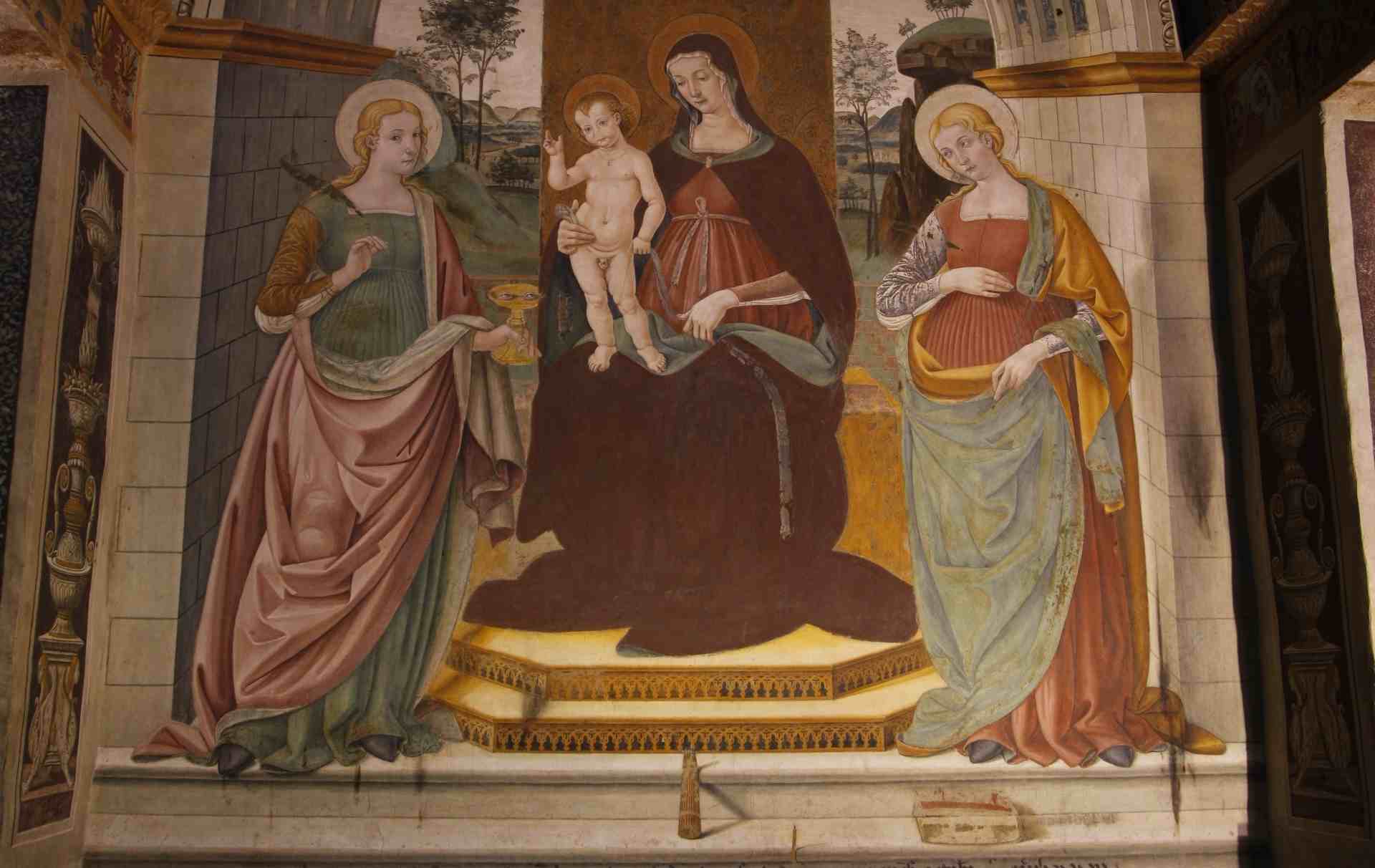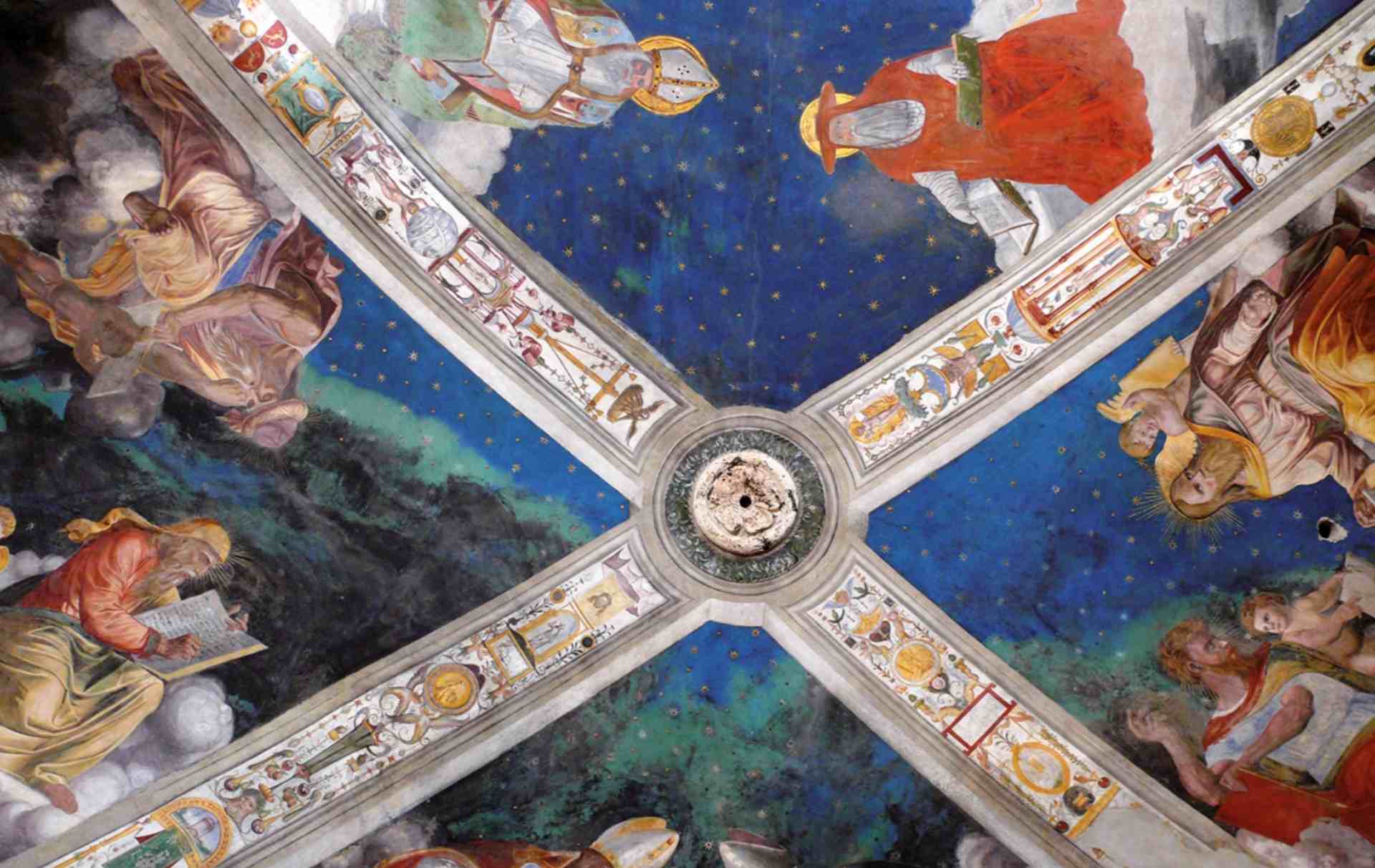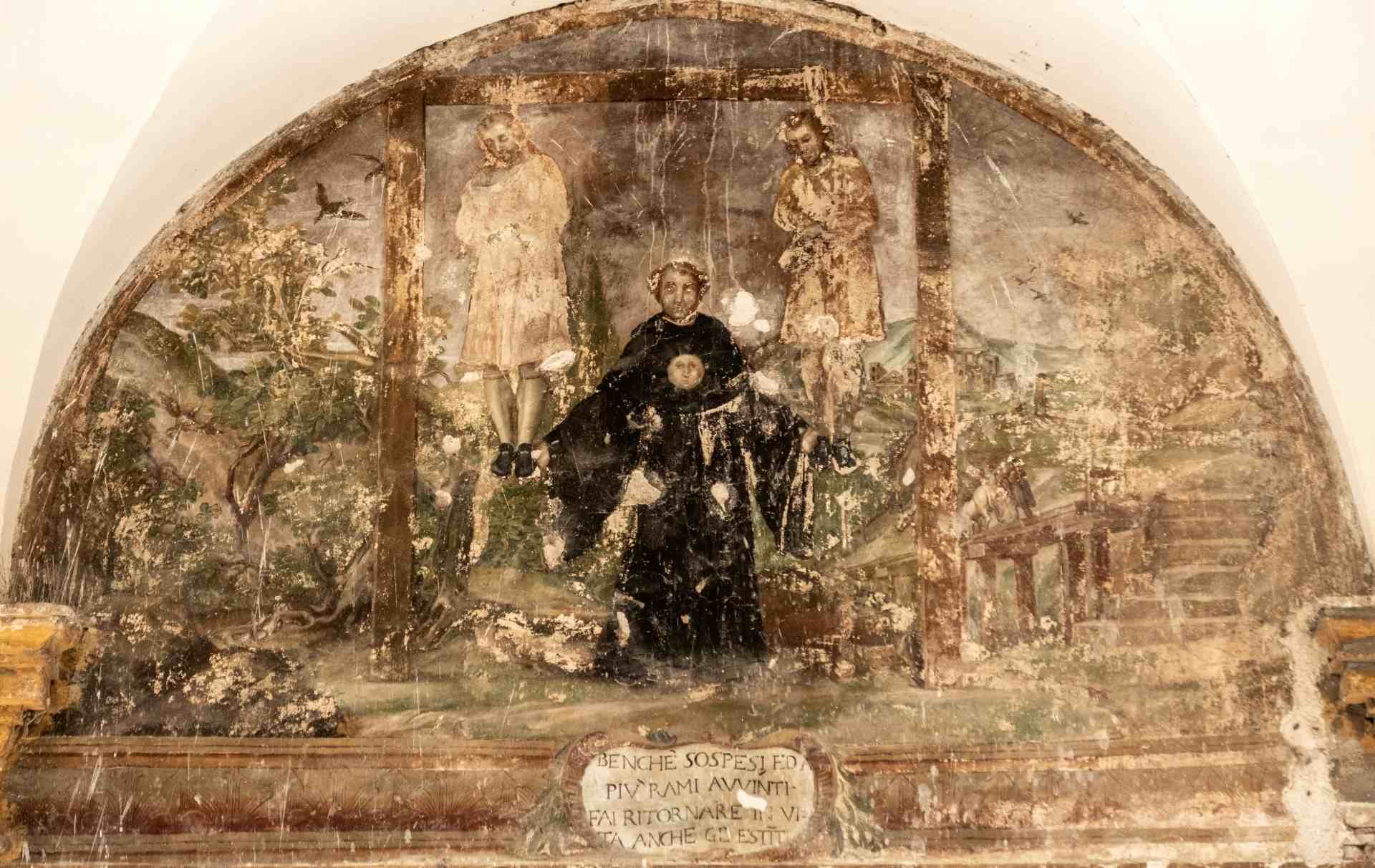One of the most beautiful and interesting architectural and artistic complexes of Umbria, even for the quality of the artwork inside of it, is the Church of Sant’Agostino.
The beauty of the Church of Sant’Agostino.
Where it is arises the big mole of the complex of the Church of Sant’Agostino, there was in the past the Benedictin Monastery of Sant’Agostino in Valle, with the church, already parish, which it was given to the agostianan order around in 1266 by Orlando , Bishop of Narni.
The friars started to build it around the 1300 and the actual structure was given at the end of the last decades of the same century.
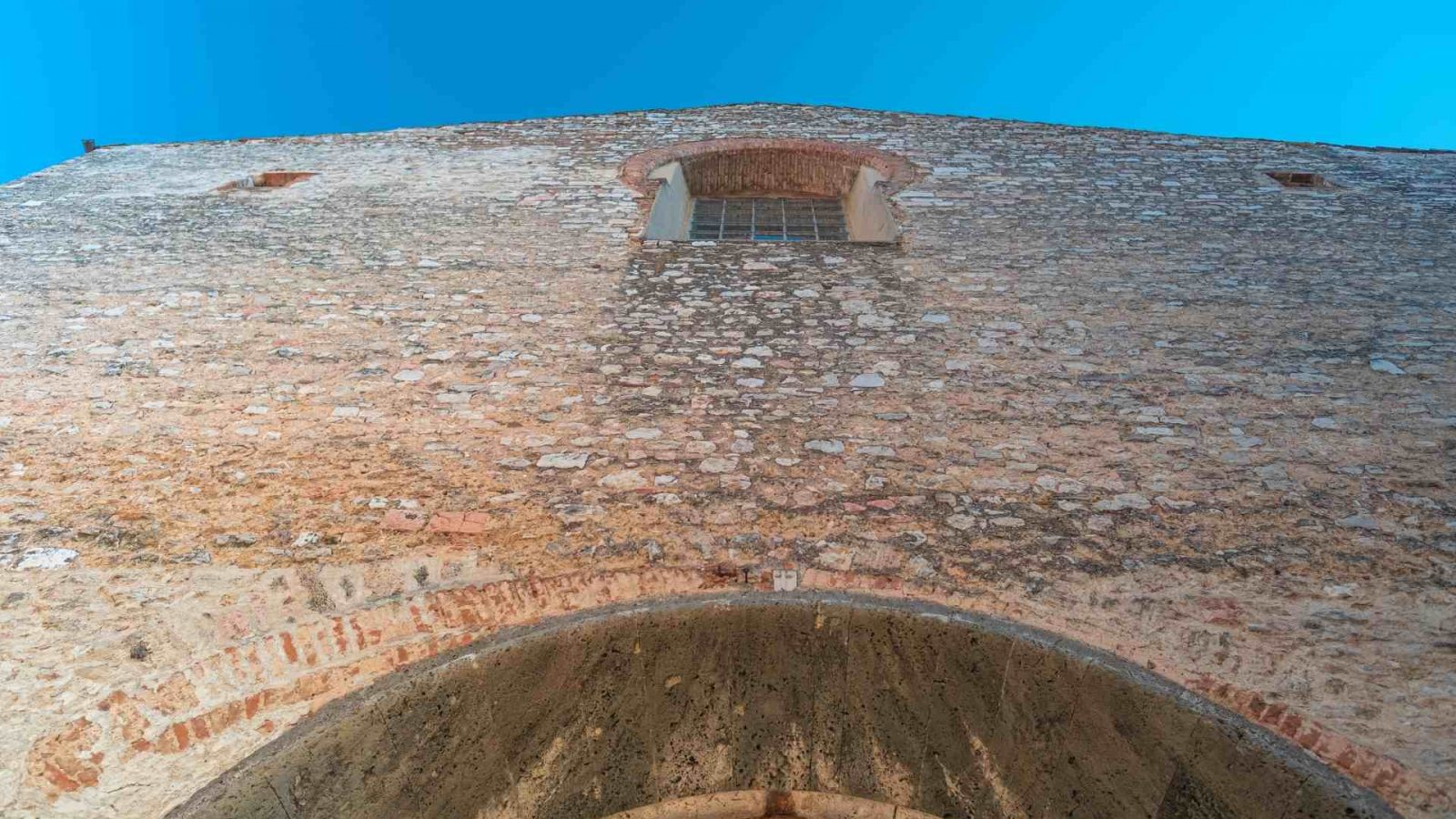
A complex full of amazing artworks.
The facade has bare and essential lines, the portal in travertine of the fifteenth century is definitely characteristic. On the right, to recall the particular history of the building, an Edicola with fresco which represents Maria col Bambino between Sant’Agostino and Sant’Andrea, dating around the 1470 and belonging to Pancrazio Jacovetti from Calvi.
The inside of the Church has three aisles, divided by two thin and slender pillars which support the wide arches.
The wood ceiling of the central aisle , in the center has an oval with a massive frame that has inside a canvas of the late baroque, which represents the glory of Sant’Agostino in glory who overthrows heretics.
Of particular attention are the altars and the works of the two aisles including: one Madonna della cintura work of the painter from Narni Michelangelo Braidi , prestigious is the apse , the niche with the Madonna col Bambino by Piermatteo d’Amelia and the chapel of San Sebastiano.
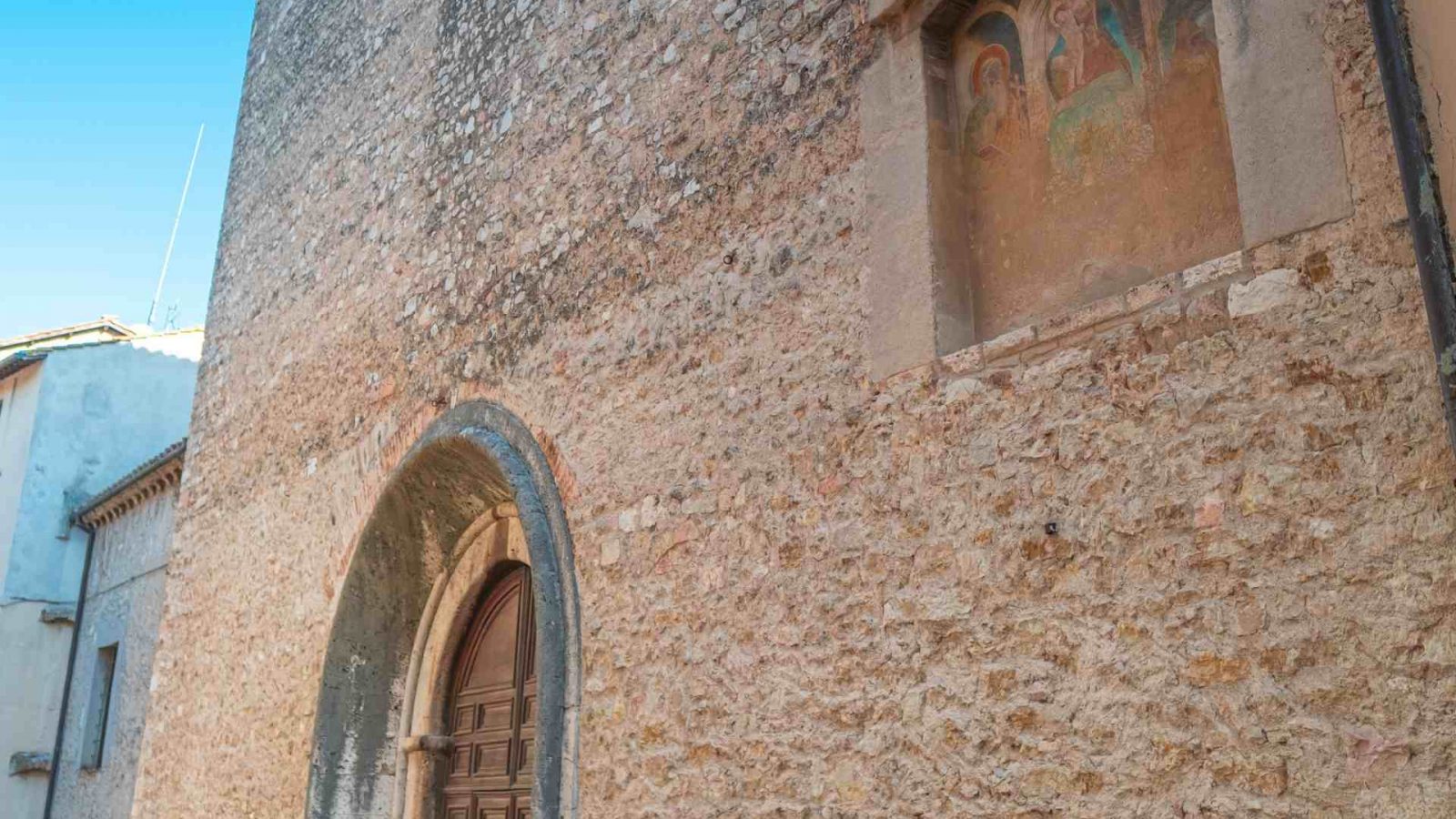
The apse and the prestigious frescoes of the Maestro della Dormitio.
The gothic apse in the lower zone preserves, under elements made later, some frescoes of the end of 1300 and 1400 which are belong to the Maestro della Dormitio from Terni, active personality of the southern Umbria between the XIV and the XV century.
In particular, it belongs to this artist , the figure of the Christ Judge under the central window.
Above those medieval and in the vaults, other works and decorations of the late baroque period.
The Madonna with Child by Piermatteo d'Amelia.
To enrich the counterface of the church, inside a niche on the left of the entrance, you can see a fresco representing the Madonna with Child between the Saints Lucia and Apollonia, dating October 24, 1482 by Pier Matteo d’Amelia.
Committed , in these years, to the realizations of the Sistine Chapel, beside different artists like the Perugino, Filippo Lippo and the Pinturicchio, the artist shows in this painting the skills achieved at the end of the XV century.
At the center the Virgin with Child, held on the lap, in benediction act. On the left Santa Lucia with the symbols of martyrdom and on the right Sant’Apollonia. On the sides a delicate spring landscape and on the vault, inside a medallion, Dio Padre.
In the frieze, which is above the niche, the arms of the coat of the Gattamela family of Narni, leaves no doubt about the commissioning of this pictorial work.
The Chapel of San Sebastiano.
Linked by a big pointed arch , on the left of the entrance, the Chapel of San Sebastiano preserves a complex decorative cycle realized in a chronological arch which starts from the last years of the XV century until 1538.
The representations on the walls and the lunette tells four episodes, three of San Sebastiano and one of Sant’Agostino :
- San Marco and San Marcelliano accompanied to martyrdom by Saint Sebastian;
- San Sebastiano shot by arrows;
- The Martyrdom of San Sebastiano;
- the Vision of San Agostino by the sea.
On the back wall, at the sides of the altar – which hosts a canvas representing the Saint pierced by arrows , now in the Cathedral of San Giovenale – under a sky full of stars, the faces of the Virgin and the Archangel Gabriele.
On the splendid cross-vaulted are represented: the Salvator Mundi, the Doctors of the Church and the Evangelists and two bishops, probably San Giovenale and San Cassio.
It is thought that the first workshop to work the chapel, in particular on the realization of the Annunciation and of the Evangelists and the Doctors of the Church , was that one of a Maestro Antoniazzesco, mean, formed on the language of the roman painter Antoniazzo Romano.
Then, as attested by a document of 1523, the commission was given to the brothers Lorenzo and Bartolomeo Torresani.
Finally, as attested by a scroll in the hand of an angel where Lorenzo is sorry he cannot finish the work, a third workshop intervened that concluded the work in the year 1538 as reported on one of the candlesticks painted on the left wall.
Next to the chapel, the Oratory of the confraternity of San Sebastiano, with a fresco from the XVI century with the Crucifixion.
images ® Alessandro Novelli
The Cloister of Sant’Agostino.
Beautiful is also the Cloister of the Convent of Sant’Agostino, extended in 1693 on a pre-existed structure as is reported in a plaque present between two arch “CLAUSTRUM HOC FUNDITUS SUIS SUMTIBUS EREXTIT P.B. IUVENALIS SISTI NARN. AD 1693”.
The cloister is enriched by 33 lunettes painted during the XVIII century, hypotizing , by Federico Benincasa from Narni with stories of the life of the Saints and Blessed Augustinians.
Church of Sant'Agostino
Via Asilo, 25, 05035 Narni TR
To reach the Church of Sant’Agostino, it is suggested to park the car into the Suffragio Parking and go up with the elevator to the complex.
Discover Narni.
Continue walking with us inside the historic center of Narni reaching the points of interest in Piazza dei Priori.
Or discover the points of interest of Narni and of its territory:
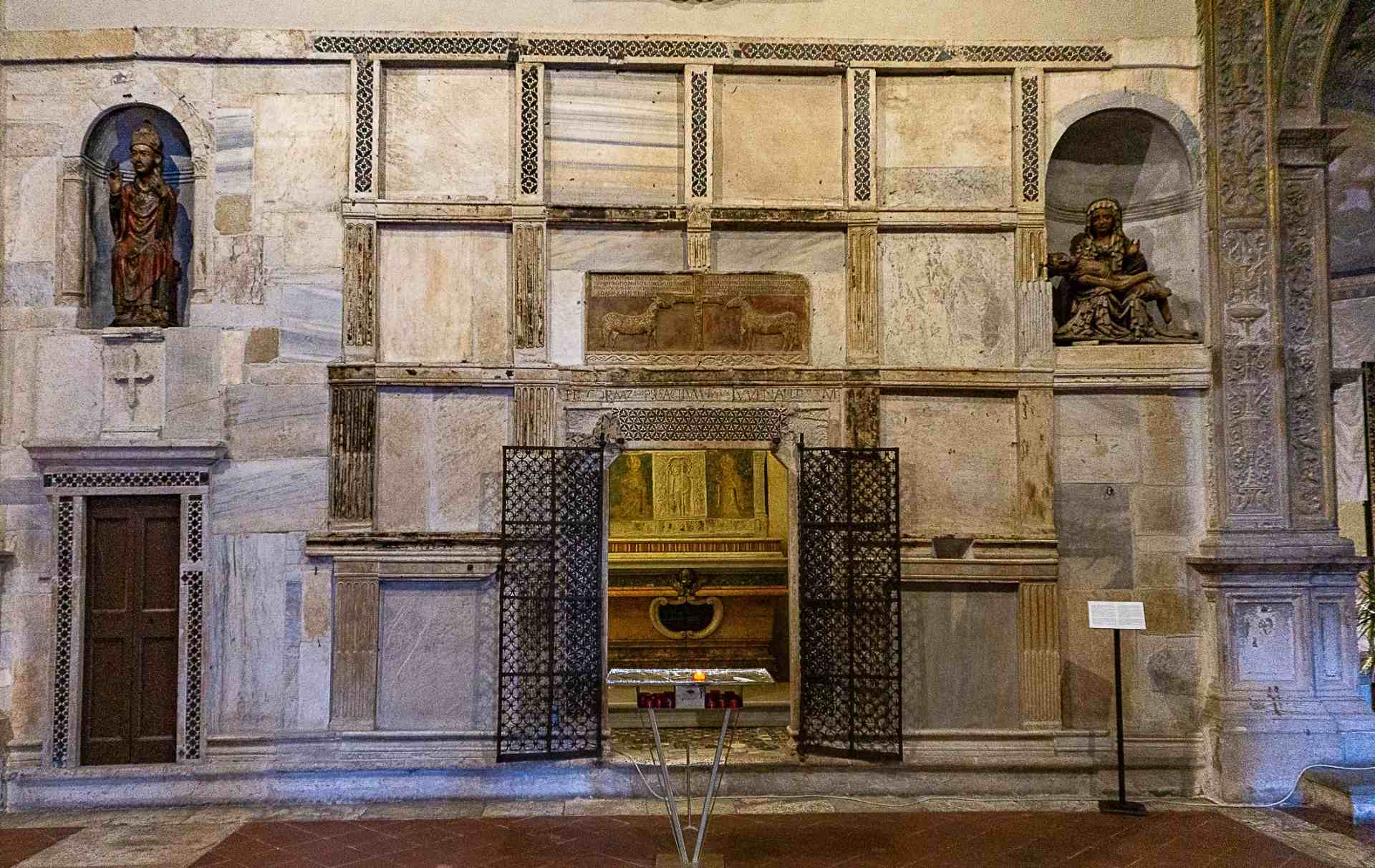
The right aisle, the fourth aisle and the Sacello of San Giovenale
One of the particularities of the Cathedral of Narni is the presence of two aisles instead of one. The right aisle continues with that birthed
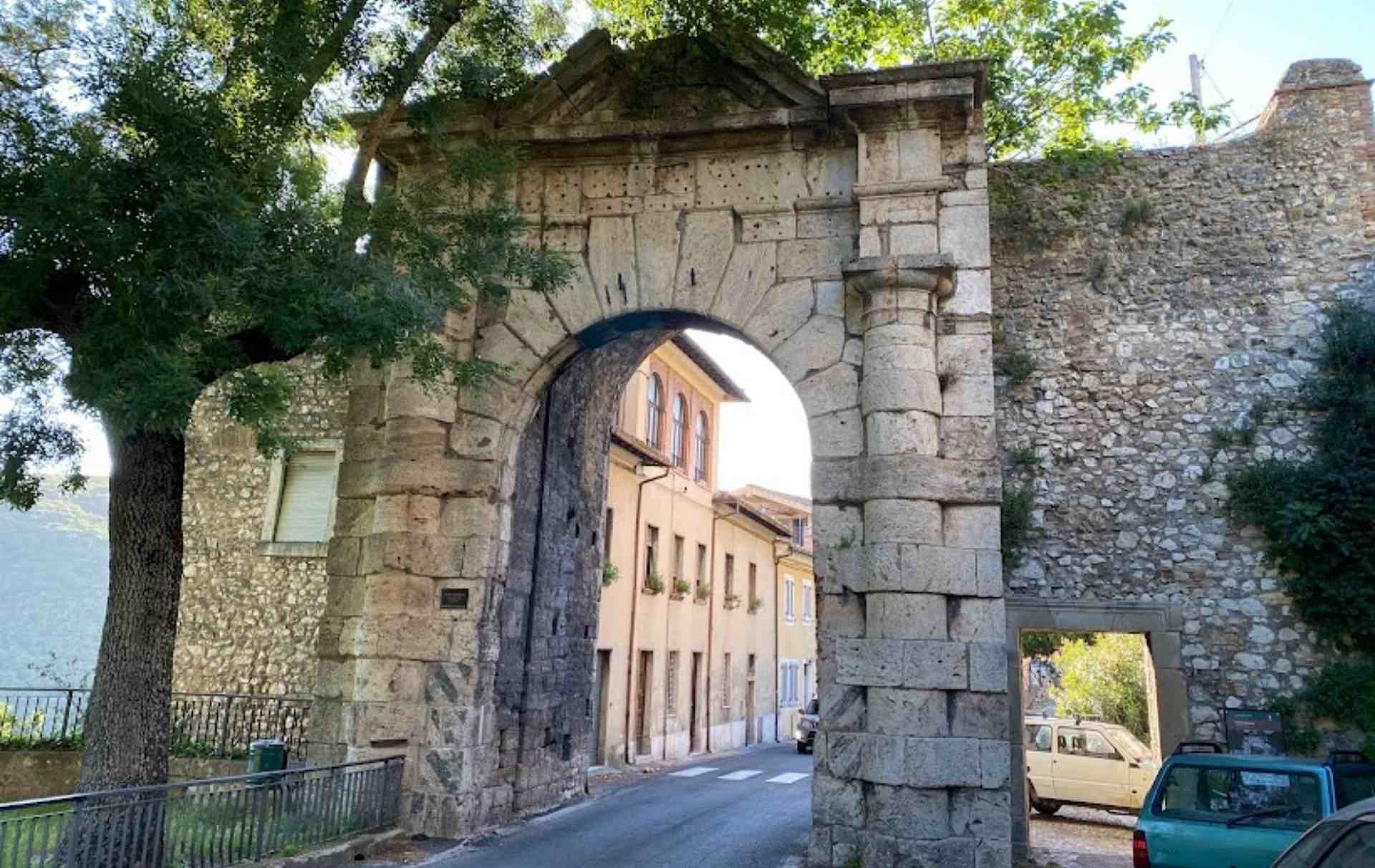
Roman Gate
Along the itinerary of Via Flaminia, which enters Narni from the south becoming Vva Vittorio Emanuele, there is Roman Gate that in the XVIII century
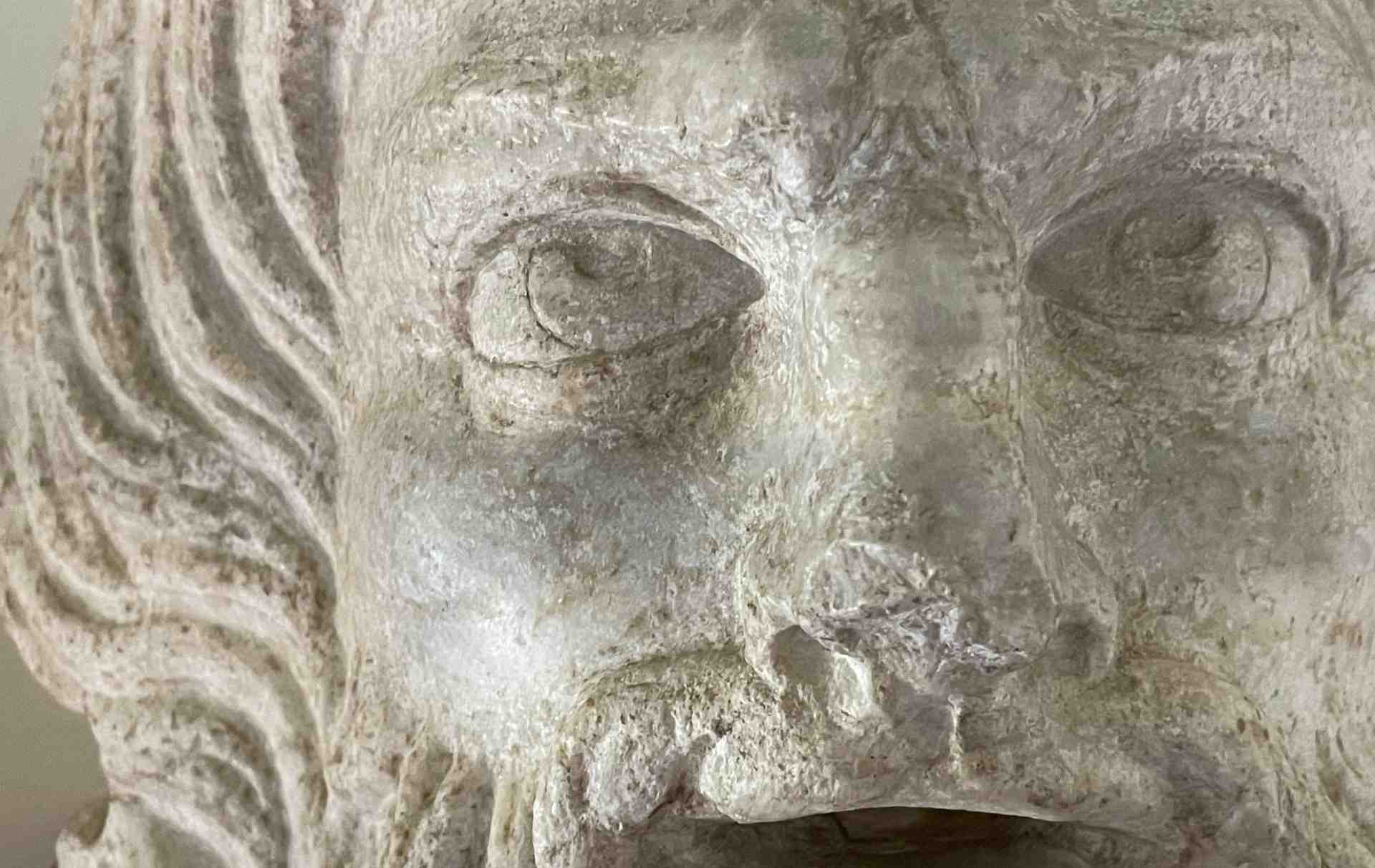
Museum: archeological section
The presence of a travertine statue of a lion, once guarding a tomb – late republican, first imperial – welcomes us in the hall of

